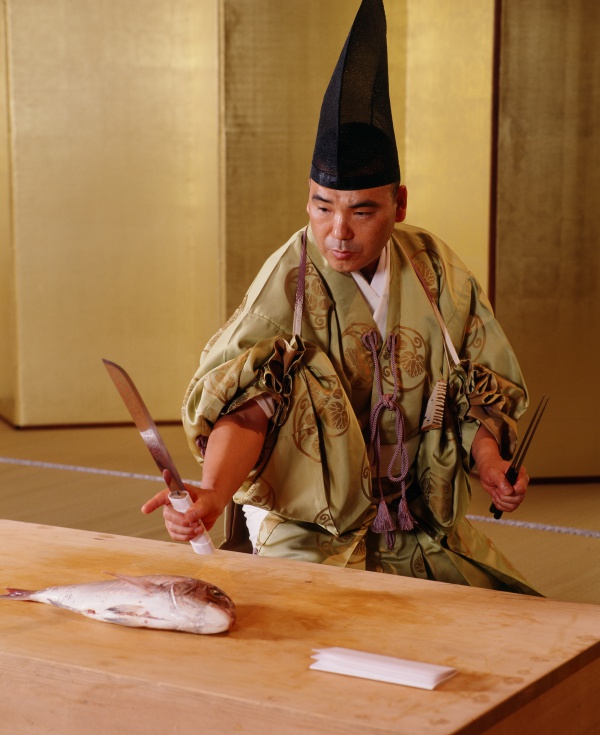Facts About Hōchōdō
Hōchōdō: The Art of Knife-Only Filleting in Japanese Cuisine
Hōchōdō is a mesmerizing and ancient Japanese culinary art where chefs fillet fish or fowl without ever using their hands. Instead, they rely solely on a knife, known as a hōchō, and a pair of metal chopsticks called manabashi. This distinctive technique is also referred to as hōchōshiki (knife ceremony) or shikibōchō (ceremonial knife).
The origins of hōchōdō trace back to the Heian period and are deeply rooted in Shinto rituals, particularly those practiced in the imperial court's yūsoku ryōri cuisine. During a hōchōdō performance, the chef dons traditional Heian period attire, which includes an eboshi hat and a hitatare robe. The long sleeves of the robe are often tied up to keep them out of the way.
Several schools teach this meticulous art, with the Shijō school being the oldest, established by Fujiwara no Yamakage in the 9th century. Today, the Ikama school is the primary surviving institution, with Shigeyoshi Konishi as its 29th-generation head.
Hōchōdō demonstrations are sometimes performed as offerings at shrines and can also be arranged for private events. One of the best places to witness this extraordinary skill is at the annual Kyoto Cuisine Exhibition, where multiple practitioners come together to showcase their mastery of this ancient art form.
